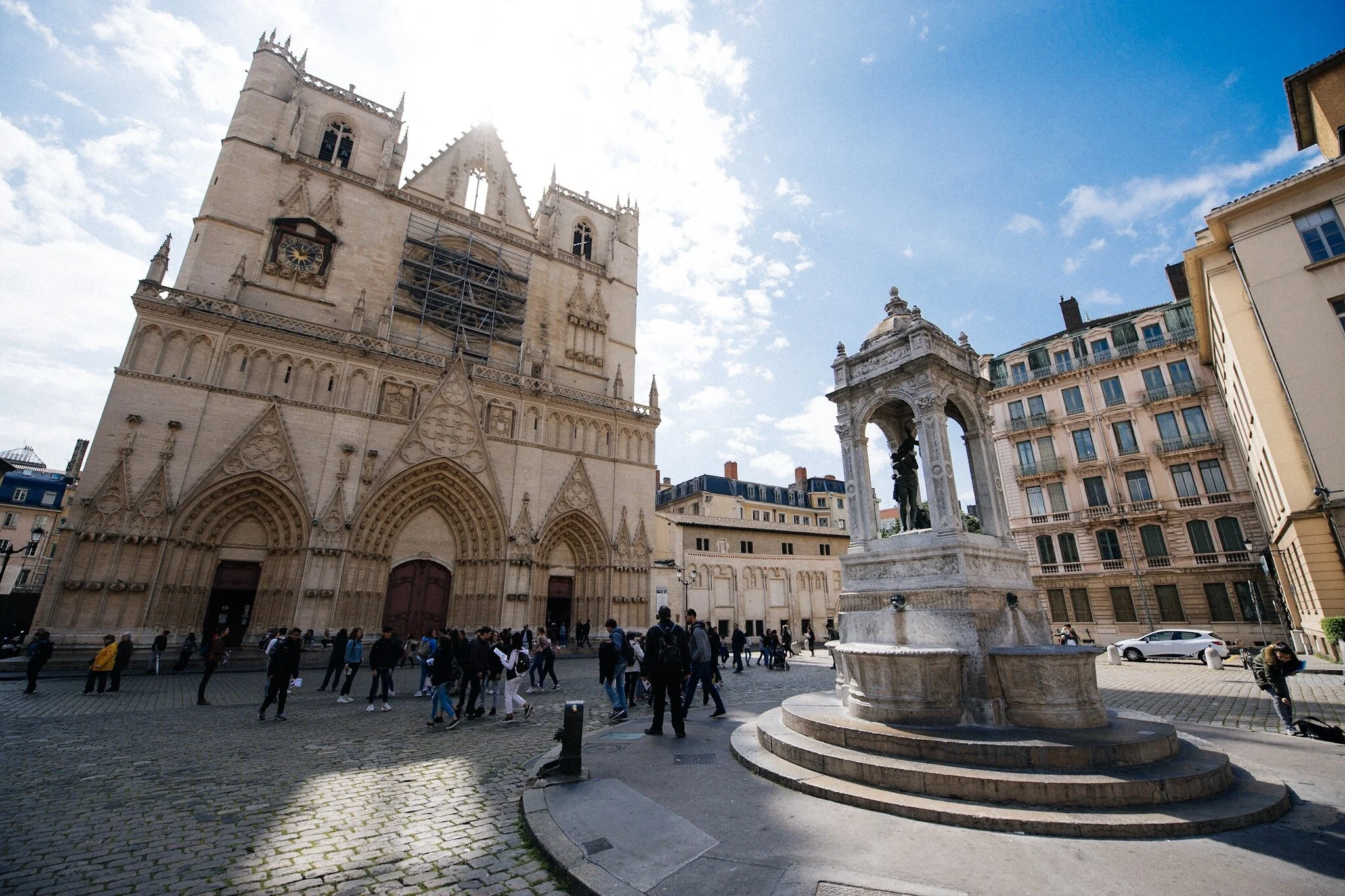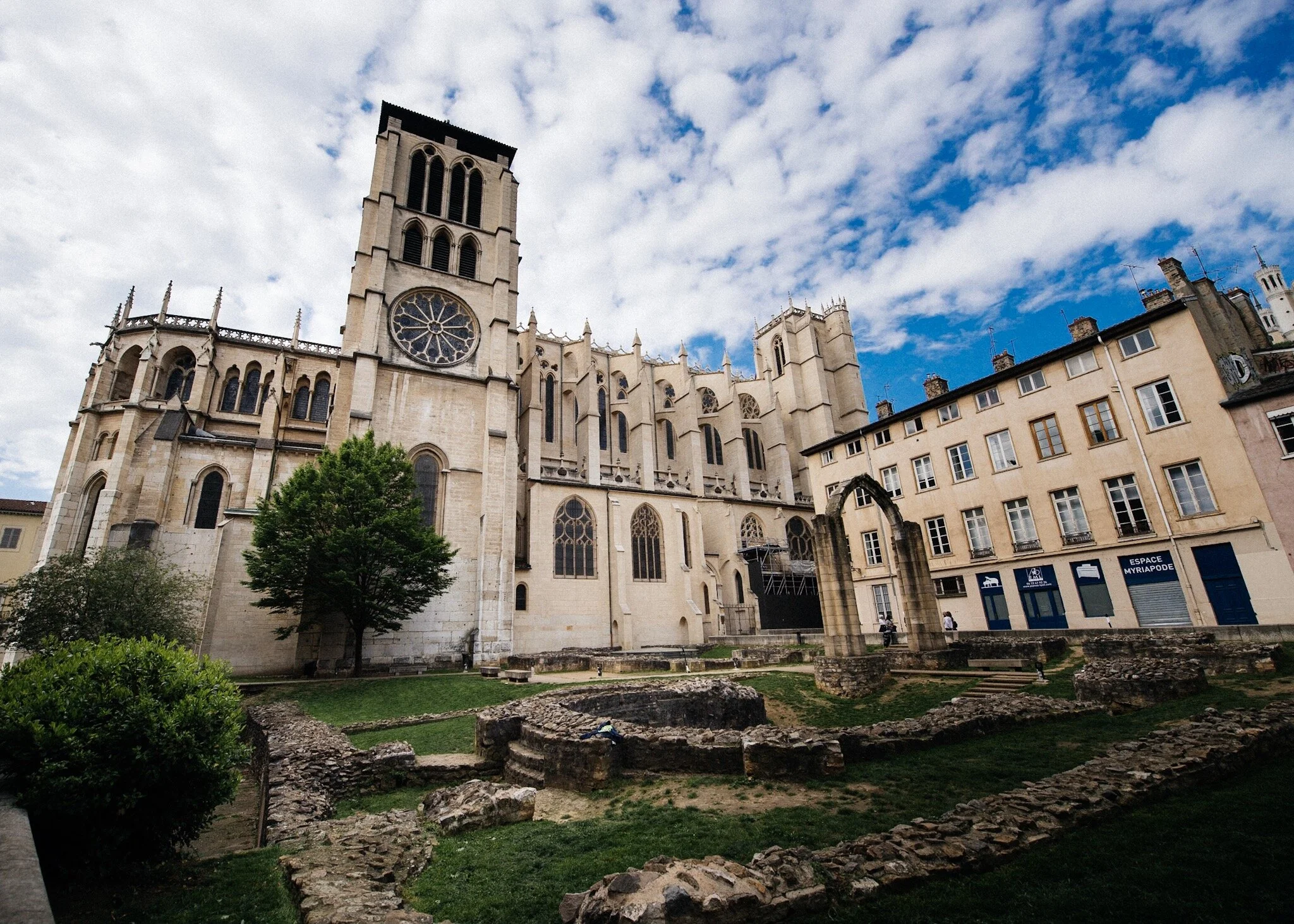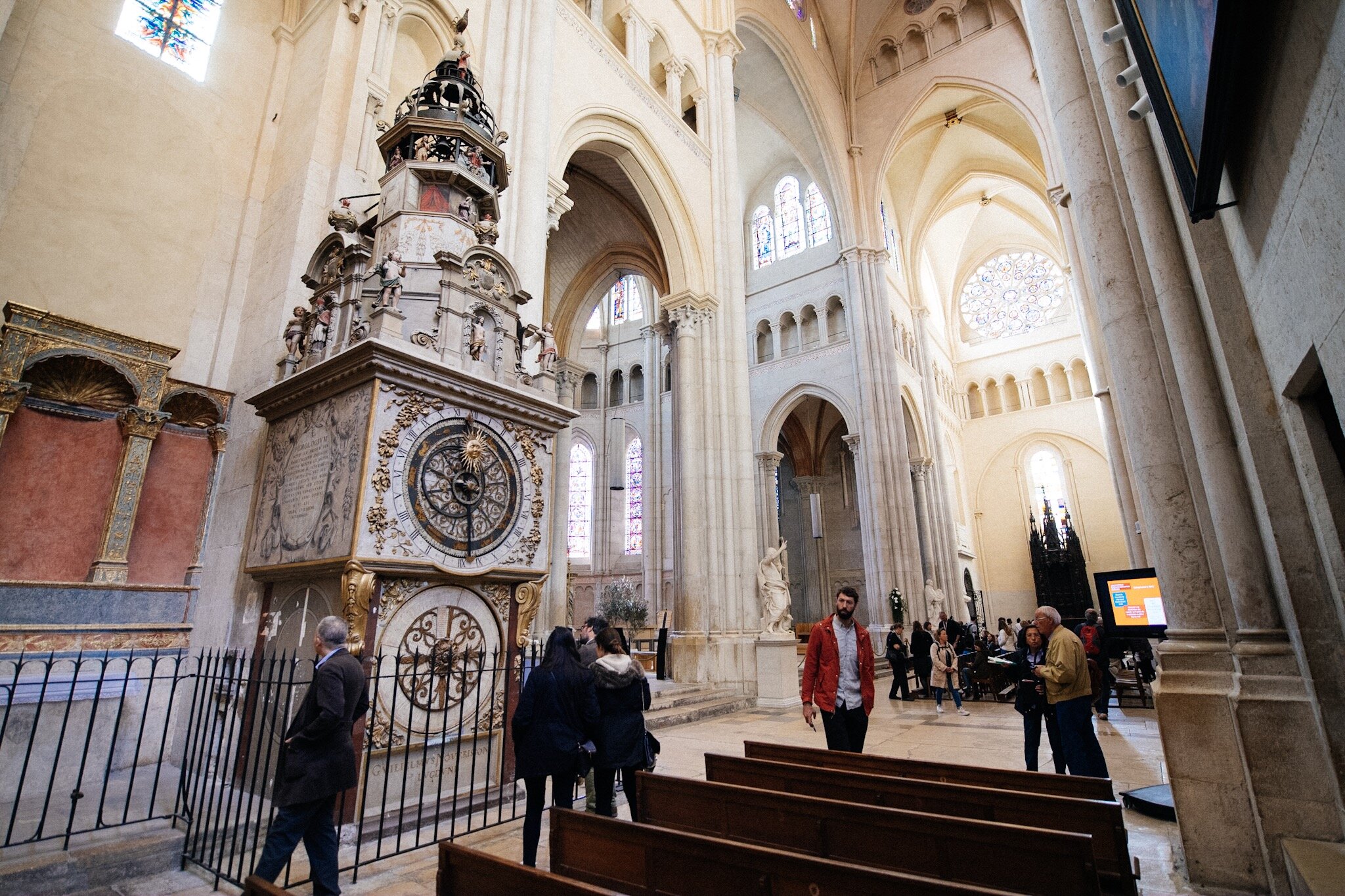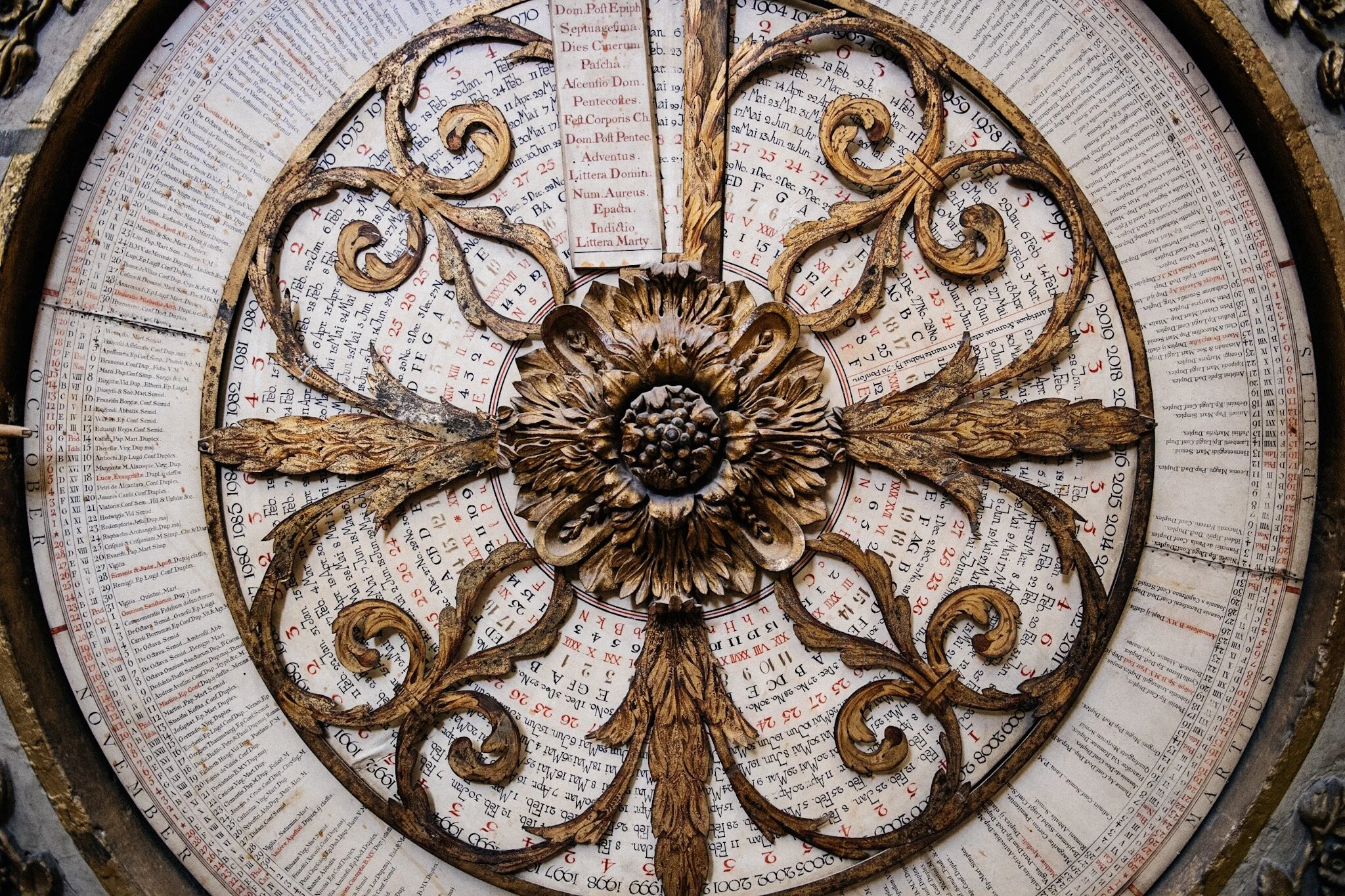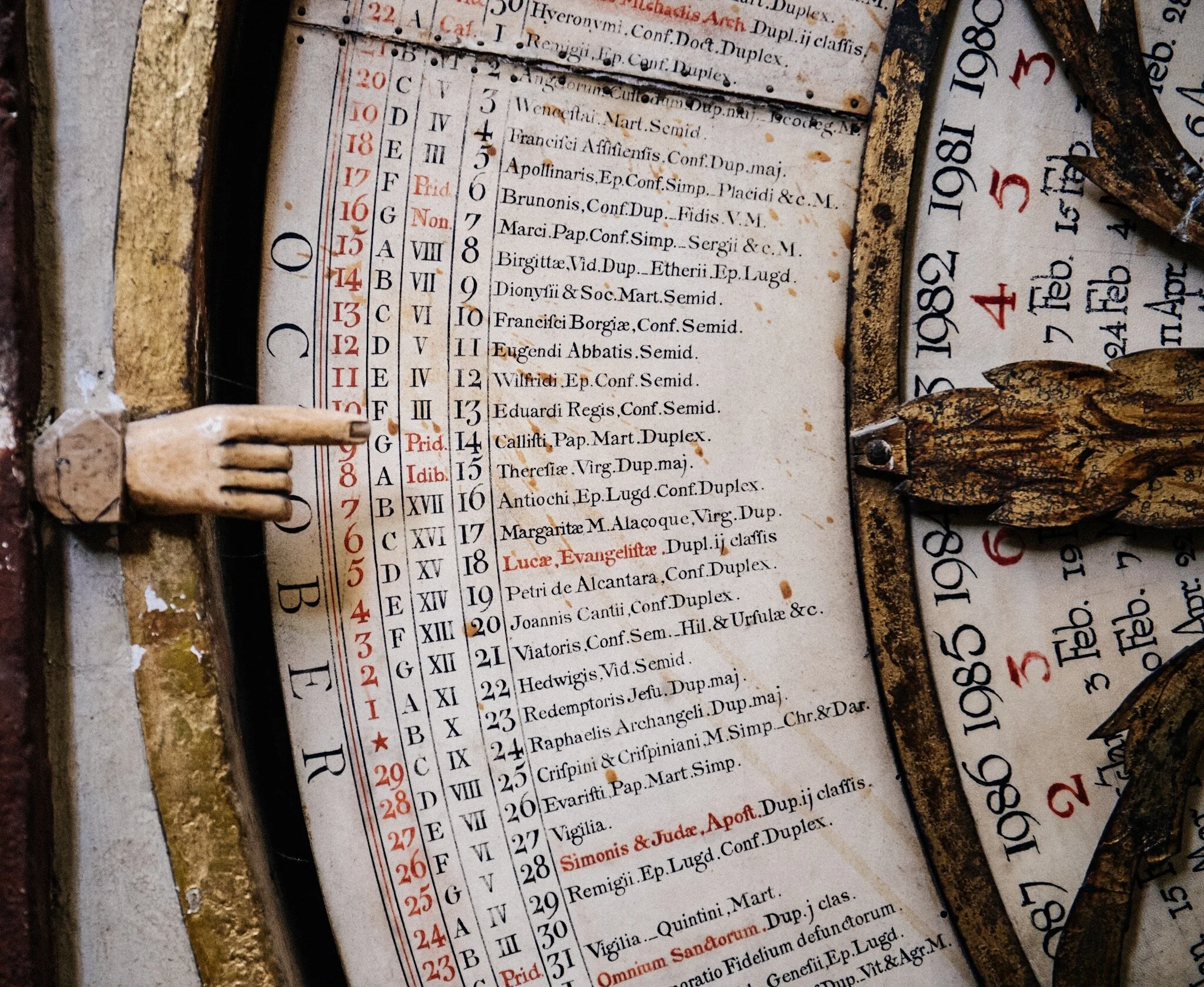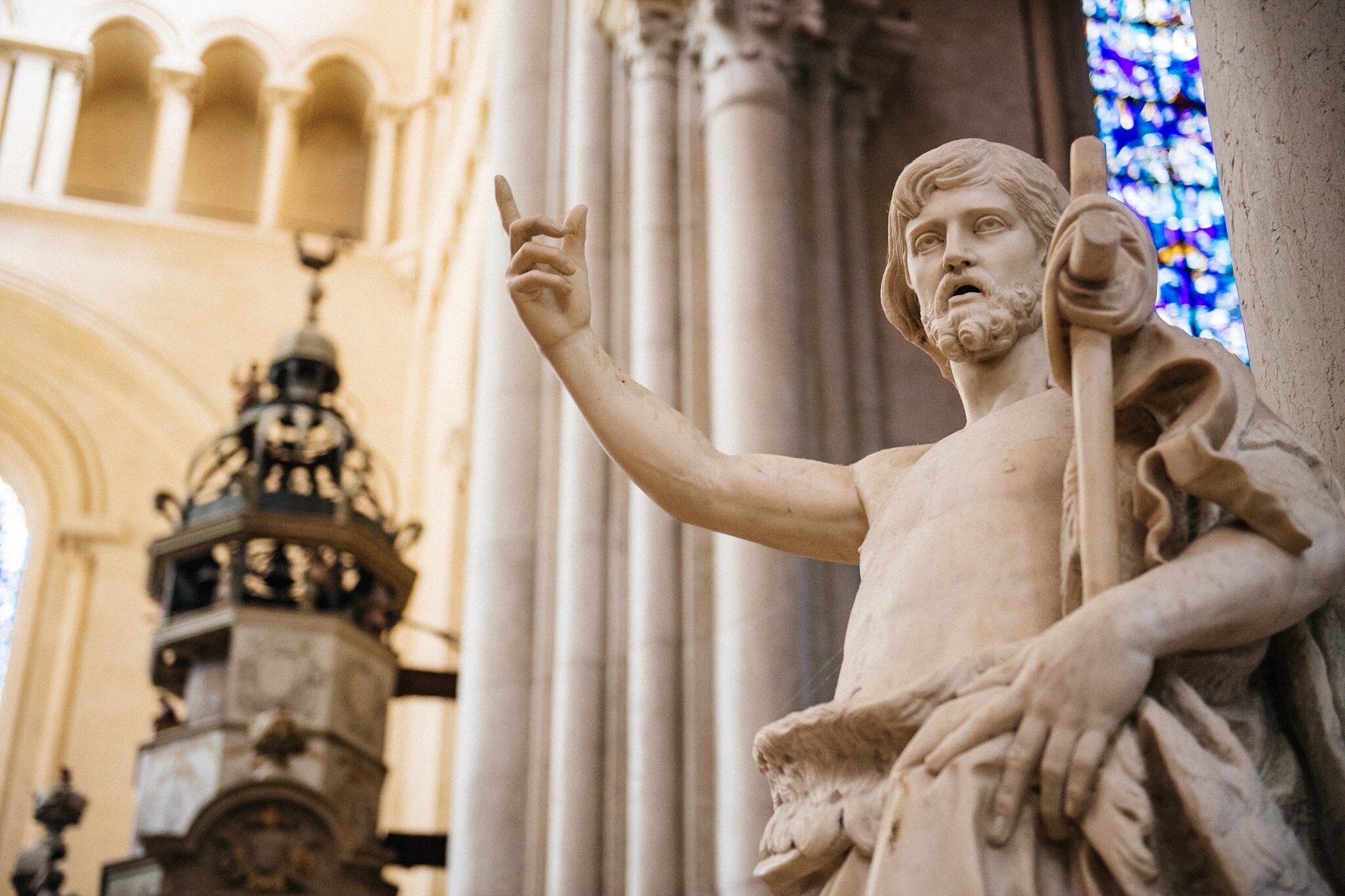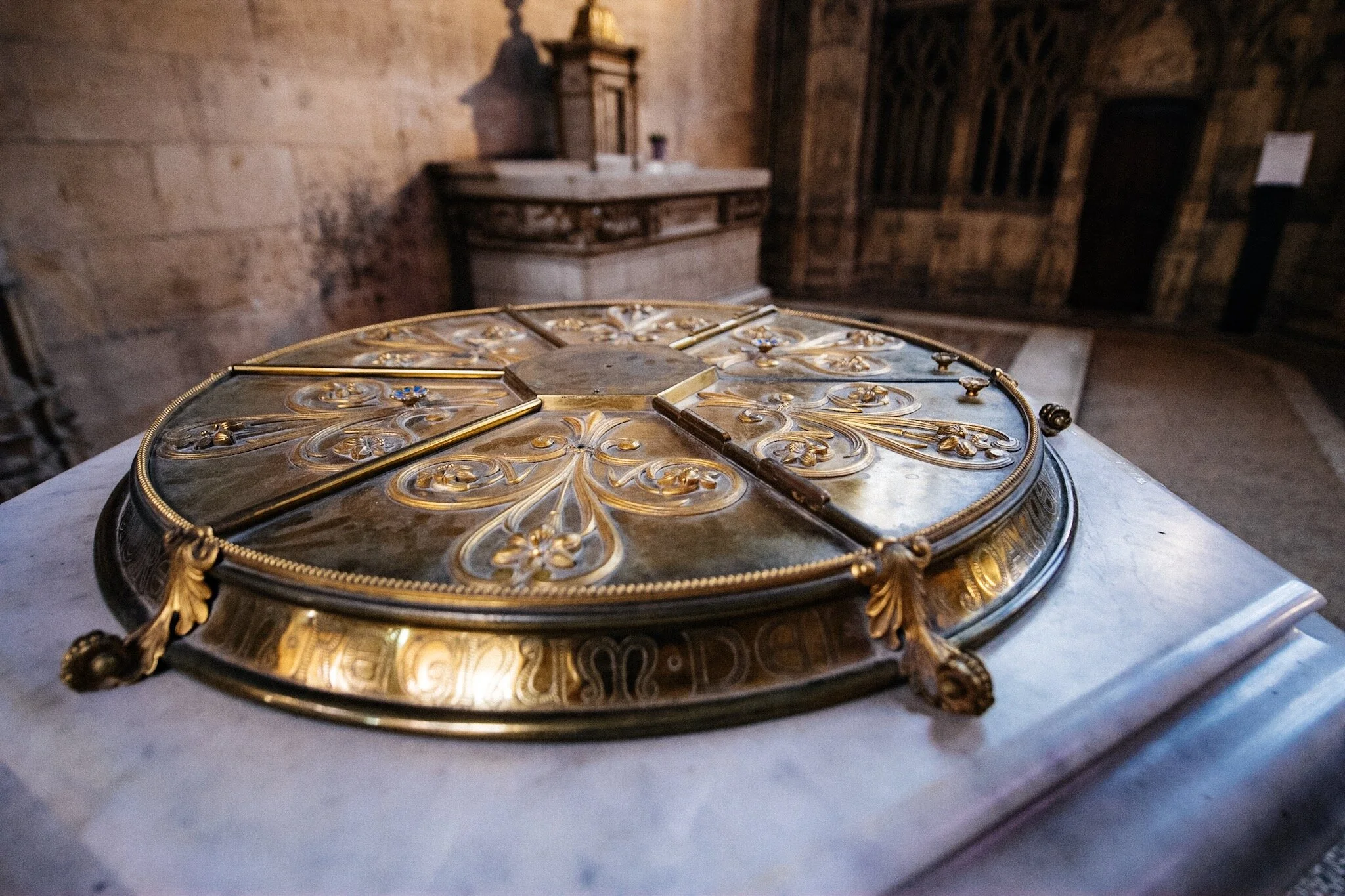Lyon’s Cathedral and Its Marvelous Astronomical Clock
In Vieux Lyon, the historic heart of the French city, lies the second-largest Renaissance district in Europe, second only to Venice. Nestled alongside the Saône River is the stunning Cathédrale Saint-Jean-Baptiste de Lyon, renowned for its remarkable astronomical clock.
The cathedral, located on the charming Place Saint-Jean, began construction in 1180 and was completed in 1476. It was built over a 4th-century cathedral group—a complex that housed two cathedrals, one dedicated to worship and the other to education, a common setup in early France.
Ruins of the old cathedral group were excavated in the 1970’s.
While much of the ancient complex has been lost to time, archaeological ruins adjacent to the cathedral offer a glimpse into its past, with the rest lying beneath the current structure.
In 1884, a statue depicting Saint John the Baptist baptizing Christ was placed in front of the cathedral. This remarkable work of art was created by the renowned sculptor Jean-Marie Bonnassieux.
The square itself, Place Saint-Jean, is a delightful spot. On one side, quaint shops sell a variety of trinkets, including The Little Prince merchandise—a tribute to Lyon-born author Antoine de Saint-Exupéry. Along the nearby streets, cozy restaurants serve traditional Lyonnais cuisine, adding to the area’s charm.
A Marvel of Medieval Engineering
The cathedral’s astronomical clock is a masterpiece of engineering and one of the oldest surviving machines from modern times. Originally installed in 1393, the clock has undergone several iterations. The current version, crafted in 1662 by Guillaume Nourissier from Ambert, is an incredible blend of art and science.
The clock is the most impressive structure in the whole Cathedral.
The clock features multiple dials:
The Astrolabe Dial (front upper face): This intricate display depicts the geocentric view of the universe, with the sun and moon revolving around the earth. It also tracks the moon phases and the rising of stars over Lyon’s horizon.
The Automaton Figures (at the very top): These change daily to reflect the day of the week. For instance:
Christ rising on Sunday
Death on Monday (a timeless nod to the dread of Mondays!)
Saint John the Baptist on Tuesday
Saint Stephen on Wednesday
Christ with a chalice on Thursday
A child with a cross on Friday
Mary on Saturday
The Minute Dial (on the right): A simple numbered dial marking the minutes from 1 to 60.
The 'perpetual' calendar is designed to run for 66 years before needing an update. Of course, I happened to visit right when they were resetting it for the next 66-year cycle!
The Perpetual Calendar (on the front): This ingenious calendar shows the day, month, year, and holidays via a small pointing hand. Designed to run for 66 years before needing updates, it operated flawlessly from 1954 until 2017, when it broke down just two years short of completing its cycle.
In 2020, plans were set in motion to restore and upgrade the clock, ensuring it can run for an incredible 1,000 years without further repairs—a fitting tribute to this timeless treasure.
Whether for its intricate design, historical significance, or sheer beauty, the astronomical clock of Lyon’s cathedral remains a must-see marvel of medieval ingenuity.
The finger points at the holiday of the day. Check out October 6th, Saint Bruno’s day.
A statue of Saint John the Baptist inside the cathedral seems to ask, 'Alright, who’s next for baptism?'
I came across something intriguing during my visit. Despite my research, I couldn’t figure out what it was. It looks like some sort of pedestal or stand, but its purpose remains a mystery to me.

